Welke batterijen worden er in BESS gebruikt??
Wanneer u de wereld van batterij-energieopslagsystemen verkent (BESS), er komt een fundamentele vraag in me op: wat zit er eigenlijk in? Wat is de kernbatterijtechnologie die zo effectief energie van uw zonnepanelen of het elektriciteitsnet opslaat?, klaar om uw huis of bedrijf van stroom te voorzien wanneer u dit het meest nodig heeft?
De overgrote meerderheid van de moderne BESS is vandaag geïnstalleerd, van woningen tot grootschalige projecten op utiliteitsschaal, gebruik Lithium-ionbatterijen. Specifiek, de geprefereerde en dominante chemie voor stationaire energieopslag is LFP (Lithium-ijzerfosfaat of LiFePO₄). Deze technologie is gekozen vanwege de superieure combinatie van veiligheid, zeer lange levensduur, en uitstekende stabiliteit, waardoor het de gouden standaard is voor betrouwbaarheid, prestaties op lange termijn.
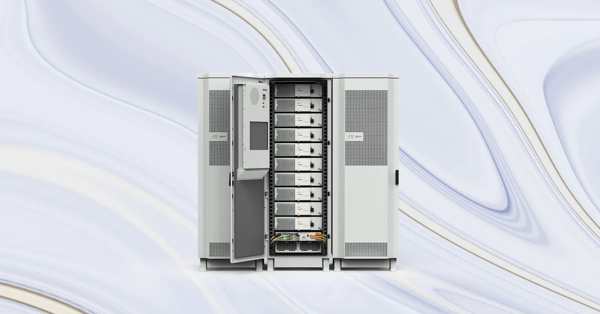
Bij GYCX Solar, onze toewijding aan veiligheid en langetermijnwaarde voor onze klanten is de reden waarom wij exclusief onze ontwerpen ontwerpen bes batterijen oplossingen rond LFP-technologie. Het is het bewezen, professionele keuze. Laten we meer over deze krachtige systemen ontdekken.
Wat is de levensduur van een Bess -batterij?
Een BESS is een significante, langetermijninvestering in de energie-infrastructuur van uw vastgoed. Dus, een kritische vraag is: hoe lang zal het batterijonderdeel meegaan, het hart van het systeem, eigenlijk laatste?
De LFP (Lithium-ijzerfosfaat) batterij binnen een moderne BESS is ontworpen voor uithoudingsvermogen, met een verwachte operationele levensduur van 10 naar 20 jaren. In termen van gebruik, Deze batterijen worden beoordeeld voor een indrukwekkende 3,000 naar over 6,000 Cycli van volledige ladingontlading. Om klanten vertrouwen te geven in deze lange levensduur, gerenommeerde fabrikanten ondersteunen hun BESS-producten doorgaans met een uitgebreide garantie van 10 jaar.
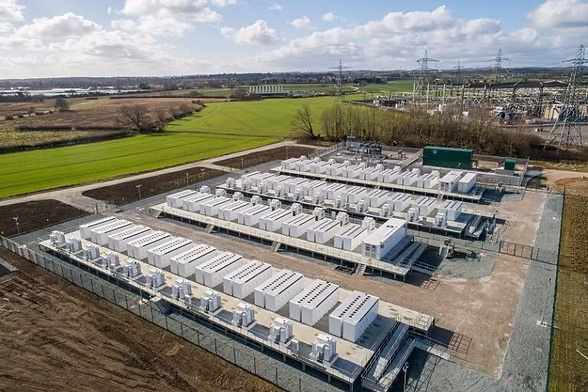
Duik dieper: De ingrediënten van een batterij die lang meegaat
De indrukwekkende levensduur van een moderne BESS-batterij is geen toeval; het is het resultaat van superieure chemie en intelligent systeemontwerp:
- LFP -chemie: LFP is inherent stabieler en robuuster dan andere lithium-ionchemie. Het is bestand tegen de stress van het dagelijkse fietsen (overdag opladen via zonne-energie, 's nachts ontladen) jarenlang zonder noemenswaardige achteruitgang. Een batterij beoordeeld voor 6,000 Cycli kunnen theoretisch meer duren 16 Jaren met één cyclus per dag.
- Intelligent BMS: Het geïntegreerde batterijbeheersysteem (GBS) treedt op als voogd, beschermt de accucellen voortdurend tegen stress door overladen te voorkomen, overdaad, en ervoor te zorgen dat alle cellen in balans zijn.
- Thermisch beheer: De BESS is een technisch systeem met ingebouwd thermisch beheer. Dit is cruciaal in het hete en vochtige klimaat van Singapore. Door de batterijcellen binnen hun optimale temperatuurbereik te houden, het systeem voorkomt de versnelde veroudering die hitte kan veroorzaken, Direct bijdragen aan een langer leven.
- De garantie: Een garantie van 10 jaar is de industrienorm voor kwalitatieve residentiële BESS. Het garandeert meestal dat de batterij een bepaalde hoeveelheid van zijn oorspronkelijke capaciteit behoudt (Bijv., 70%) tegen het einde van de looptijd, Dit biedt een duidelijke maatstaf voor zijn prestaties op lange termijn.
Wat zijn de drie belangrijkste soorten BESS?
Is een BESS voor één woning hetzelfde als een BESS die wordt gebruikt om het elektriciteitsnet van een hele stad te ondersteunen? Helemaal niet. BESS-technologie is ongelooflijk schaalbaar, en het wordt doorgaans onderverdeeld in drie hoofdtypen op basis van de toepassing en grootte.
De drie belangrijkste soorten BESS zijn:
- Woonhuis BESS: Kleinschalige systemen ontworpen voor individuele woningen.
- Reclame & Industrieel (C&I) BESS: Middelgrote systemen voor bedrijven, fabrieken, en ander commercieel vastgoed.
- Utility-schaal BESS: Enorm, systemen op netniveau die eigendom zijn van en beheerd worden door energiebedrijven.
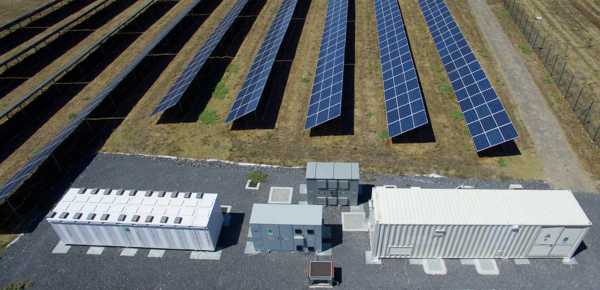
Duik dieper: Van uw huis tot het elektriciteitsnet
Laten we eens kijken naar het doel van elk type:
- Woonhuis BESS:
- Maat: Typisch 5 kWh tot 30 kWh.
- Doel: De belangrijkste doelstellingen zijn het maximaliseren van het eigen verbruik van zonne-energie (zonne-energie overdag opslaan voor gebruik 's nachts, wat geweldig is voor het beheren van hoge elektriciteitstarieven in Singapore), zorgen voor back-upstroom tijdens stroomuitval, en de energieonafhankelijkheid vergroten.
- Vormfactor: Meestal een strak wandmodel of een compact exemplaar, stapelbaar reksysteem.
- Reclame & Industrieel (C&I) BESS:
- Maat: Van 30 kWh tot enkele megawattuur (MWH).
- Doel: Hoofdzakelijk gebruikt voor "peakshaving"." om de dure vraagkosten te verlagen, het maximaliseren van het gebruik van zonne-energie op locatie, en het leveren van back-upstroom voor kritieke activiteiten.
- Vormfactor: Vaak grotere binnenkasten of buitenbehuizingen.
- Utility-schaal BESS:
- Maat: Erg groot, van tientallen tot duizenden MWh.
- Doel: Om het hele elektriciteitsnet te stabiliseren. Ze slaan enorme hoeveelheden energie op van grootschalige zonne- of windparken, het leveren van netwerkdiensten zoals frequentieregulering, en de vervuilende "peaker" vervangen" krachtplanten.
- Vormfactor: Meestal bestaat uit rijen grote, eenheden ter grootte van een zeecontainer.
Bij Gycx Solar, wij zijn gespecialiseerd in het ontwerpen en installeren van hoogwaardige residentiële en C&I BESS-oplossingen afgestemd op de unieke energiebehoeften van onze klanten in Singapore.
Is BESS AC of DC?
Als je ingaat op de technische details van BESS, je hoort de termen AC (Wisselstroom) en gelijkstroom (Direct stroom). Is de BESS zelf het een of het ander?? Het antwoord is beide: het fungeert als een slimme brug tussen de twee.
Een BESS is in wezen een DC-apparaat in de kern, omdat batterijen gelijkstroom opslaan en vrijgeven. Echter, het maakt gebruik van een geavanceerde omvormer (het stroomconversiesysteem, of PC's) om verbinding te maken met onze huizen en het elektriciteitsnet, welk gebruik Wisselstroom. Hoe de BESS en zijn omvormer op een zonnepanelensysteem zijn aangesloten, bepaalt of het om een ‘AC-gekoppeld’ systeem gaat" of "DC-gekoppeld" systeem.
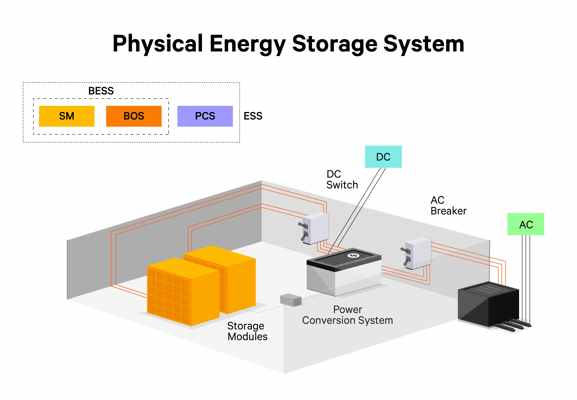
Duik dieper: AC-gekoppeld VS. DC-gekoppelde systemen
Hier volgt een kort overzicht van de twee belangrijkste architecturen voor zonne-energie + opslag:
- DC-gekoppeld: De zonnepanelen (die gelijkstroom produceren) en de batterijen (waarin gelijkstroom wordt opgeslagen) zijn verbonden aan dezelfde kant van een single hybride omvormer. Hierdoor kan de gelijkstroom van de panelen de gelijkstroombatterijen direct en zeer efficiënt opladen. Dit is vaak de voorkeursmethode voor nieuw, geïntegreerde installaties.
- AC-gekoppeld: De zonnepanelen beschikken over een eigen omvormer, en het batterijsysteem heeft een seconde, aparte batterij-omvormer. Beide zijn verbonden met het AC-paneel van het huis. Om de batterij op te laden via zonne-energie, de wisselstroom van de omvormer voor zonne-energie wordt weer omgezet in gelijkstroom voor de batterij. Deze methode is uitstekend geschikt voor het achteraf inbouwen van een batterij in een huis dat al een zonnepaneelsysteem heeft.
GYCX Solar Story: “Als een klant ons dit vraagt, we leggen uit dat de beste keuze afhangt van hun situatie. Voor een nieuw grondstuk in Singapore wordt zonne-energie en opslag samengebracht, we zullen waarschijnlijk een zeer efficiënt DC-gekoppeld systeem aanbevelen. Voor een klant met een zonnesysteem van 5 jaar oud die nu back-up wil toevoegen, een AC-gekoppelde BESS is de perfecte oplossing."
Hoe lang gaat een BESS mee??
We hebben het gehad over de levensduur van het batterijonderdeel, maar hoe zit het met de hele BESS-eenheid? Hoe lang kun je verwachten dat het hele systeem meegaat??
Een complete BESS is ontworpen voor een lange levensduur, maar verschillende componenten hebben een verschillende levensduur. De Batterijmodules, zoals we hebben opgemerkt, doorgaans laatste 10 naar 20 jaren. De andere belangrijke elektronische component, de omvormer (of PC's), heeft over het algemeen een levensverwachting van 10 naar 15 jaren. Daarom, u kunt een zeer lange levensduur van uw systeem verwachten, met de mogelijkheid van een geplande vervanging van de omvormer gedurende de totale levensduur van de batterij.
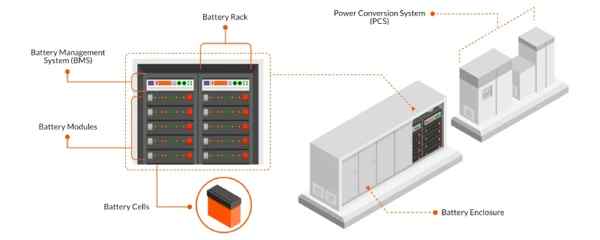
Duik dieper: Levensduur van de systeemcomponenten
Een BESS is een verzameling hoogwaardige componenten die zijn ontworpen om samen te werken:
- Batterijmodules: De LFP-batterijen gaan het langst mee, dankzij hun robuuste chemie ontworpen voor duizenden cycli.
- Omvormer (Pc's): Dit is het werkpaard van het systeem. Als een complex stukje vermogenselektronica dat voortdurend hoge vermogensbelastingen beheert en met hitte omgaat, zijn componenten (zoals condensatoren en ventilatoren) natuurlijk ouder worden. EEN 10-15 Een levensduur van een jaar is een typische verwachting voor een hoogwaardige hybride omvormer van een gerenommeerd merk. Velen worden geleverd met een garantie van 10 jaar, passend bij de batterij.
- Andere componenten: De behuizing, bedrading, Veiligheid verbroken, en andere hardware (de "Systeemevenwicht") zijn allemaal ontworpen om de hele levensduur van het systeem mee te gaan, op voorwaarde dat ze niet beschadigd zijn.
- Langetermijnplanning: Dit betekent dat over een periode van twintig jaar, u moet rekening houden met de initiële investering en één mogelijke vervanging van de omvormer rond de 10-15 jaar merk. Dit is een normaal onderdeel van het langetermijnbezit van een geavanceerd energiesysteem.
Bij GYCX Solar, Wij bouwen onze systemen uitsluitend met hoogwaardige kwaliteit BESS-componenten1 van toonaangevende fabrikanten met sterke garanties, en we zijn transparant naar onze klanten over de verwachte levensduur van elk onderdeel. Dit zorgt ervoor dat u een duidelijk beeld krijgt van de lange termijn waarde2 en onderhoudsplan voor uw investering.
EEN bes batterijen systeem is intelligent, geïntegreerde oplossing die essentieel is voor modern energiebeheer. Aangedreven door veilige en duurzame LFP-batterijen, het is duurzaam, onderhoudsarme asset die energiezekerheid en financiële besparingen biedt. Door de componenten ervan te begrijpen en hoe het werkt, U kunt een zelfverzekerde investering doen in uw energietoekomst.
Als u er klaar voor bent om te ontdekken hoe een BESS kan worden afgestemd op uw huis of bedrijf in Singapore, Ons expertteam bij GYCX Solar is er om te helpen. Neem vandaag nog contact met ons op voor een professioneel consult!
